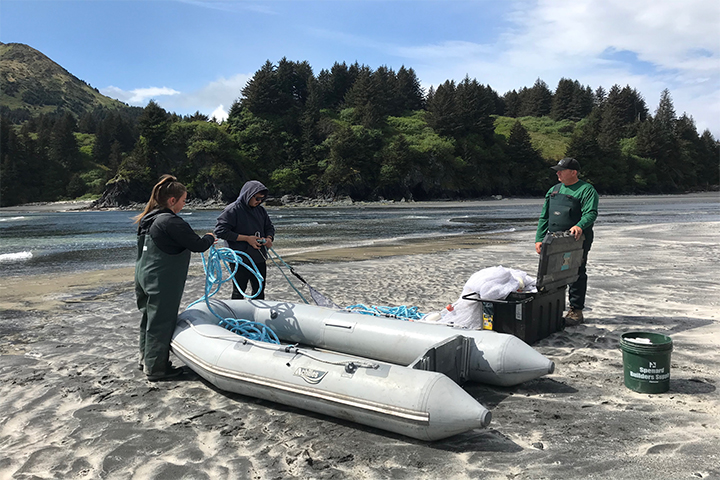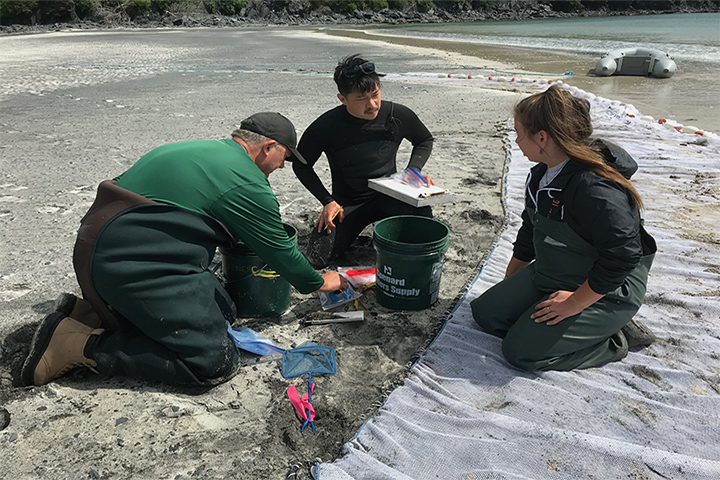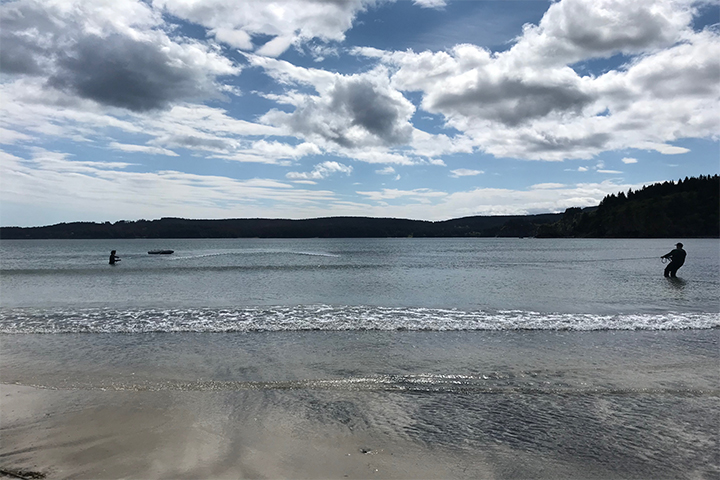
Staff from the Kachemak Bay NERR expanded research collaborations and completed proof of concept activities to catalyze future research on the mechanisms of paralytic shellfish toxin transfer from forage fish to upper trophic populations– an increasing concern after statewide seabird die-offs and marine mammal strandings.
The project
Harmful algal bloom (HAB) events are becoming more common in Alaska as ocean temperatures rise due to climate change. These events carry the risk of producing dangerous levels of HAB-derived toxins in the marine environment, including paralytic shellfish toxins. These toxins pose a serious threat to upper trophic populations such as marine mammals, sea birds, and predatory fish, where a likely mechanism of transfer is through consumption of forage fish that have been exposed to the toxin. Recent events occurring statewide, such as seabird die offs and marine mammal strandings, have raised concerns about this pathway, highlighting a need to better understand its mechanisms. A major gap is data-driven information regarding paralytic shellfish toxin exposure levels in forage fish. This catalyst project began to address this issue by gathering preliminary data and helping primary end users– Kachemak Bay NERR and partner researchers– become better-positioned to pursue future research opportunities.
The project produced preliminary data through “proof of concept” activities to support future research, (e.g., dosing fish with shellfish toxins in replicated experiments). These activities included the capture of various wild forage fish (e.g., Pacific cod, herring, sand lance), aquaculture maintenance of those fish, and successful feeding. The team worked closely with the Alaska HAB Network and several NOAA partners including Alaska Sea Grant and the Beaufort, Kasitsna Bay, and Kodiak NOAA Laboratories to both shape and complete the activities. One of the most important findings was the determination of a target species– the Pacific sand lance (Ammodytes personatus)-- due to their ubiquity and abundance in the Alaskan marine ecosystem, their importance to other research groups and end users, and their relative ease of capture and husbandry.
The impact
- Through improved coordination among researchers working on toxin issues in Alaska, a strengthened stakeholder network in Alaska, and completion of proof of concept activities, the project team has increased capacity to attract resources for the next phase of the research for understanding the mechanisms of paralytic shellfish toxin transfer between trophic levels.
- The team identified a target species for the next phase of forage fish exposure to shellfish toxins research, and important findings related to the appropriateness of using other fish species in such research.



